Contents
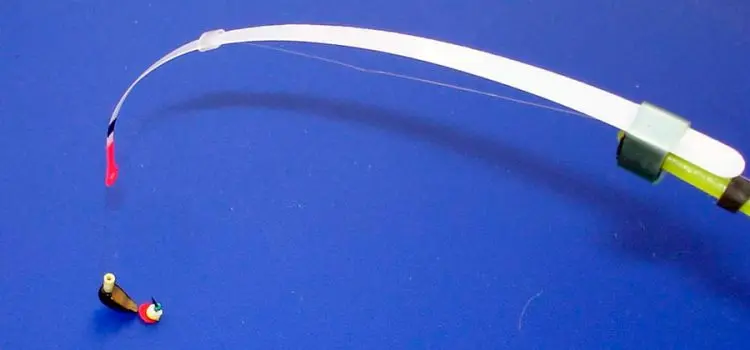
Winter fishing is different from summer fishing and has its own characteristics associated with natural factors. These include low temperatures, short daylight hours, the presence of ice on the reservoir, etc. In this regard, the behavior of the fish also changes. In addition, in winter, fish are harder to find, since they do not disperse throughout the reservoir, but prefer to be at a depth.
Tackle for winter fishing also has its own nuances. With the advent of winter, it is better to forget about gear for summer fishing. It is necessary to make an audit and put them into storage. After that, winter fishing rods are taken and go fishing.
As a rule, special indicators of bites are used in winter, including special floats that are not suitable for summer fishing. But the most common indicator of a bite is the gatehouse or, as they are also called, nods. They are especially useful in fishing conditions when there is a rapid current, although they allow you to fish without a current without problems. Under certain conditions, gatehouses become nods. They will be discussed in this interesting article.
The purpose of the nod
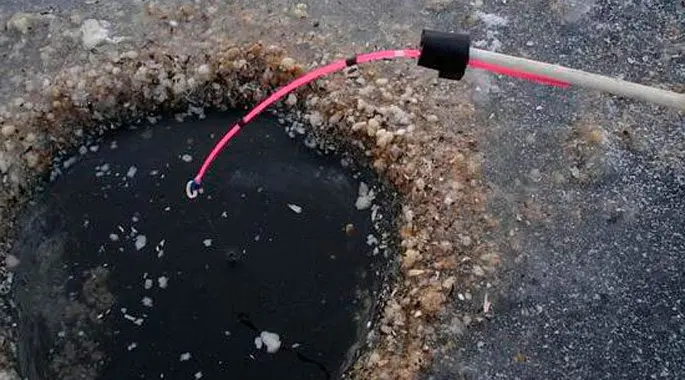
This is a device that helps to catch fish in the winter. With the onset of the new season, fishermen begin to share new personal designs for winter gear, including nods.
As a rule, a nod performs 2 very important functions:
- a nod allows you to timely determine the presence of a bite;
- it helps to control the movement of the bait in the water column.
This element of gear can be made of any material that is resistant to low temperatures, as well as capable of withstanding numerous bends and deformations. Based on the conditions of winter fishing and the specifics of fishing, the conditions for the operation of a nod are very harsh. Therefore, not every material is able to withstand them.
An equally important criterion for determining its functionality is the degree of rigidity. Its (rigidity) is selected for specific fishing conditions, as they can be different in different water bodies. In this regard, it is possible to use the following materials:
- Sheet film lavsan is suitable for the manufacture of nods with a very low degree of rigidity. In other words, this material is suitable for soft and sensitive products.
- Plastics for various purposes, although they can hardly withstand very low temperatures.
- Long bristles or wild boar hair.
- Bamboo.
- For the manufacture of hard nods, metal steel strips or springs are taken.
Types of nods
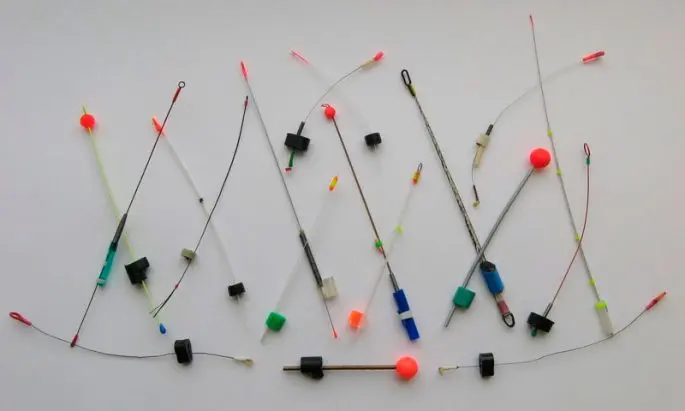
Depending on the type of stiffness of nods, they are divided into the following types:
- Nods of minimum stiffness (soft nods) are used in water bodies where there is no current. Moreover, you can catch any kind of fish. Soft nods have the best sensitivity.
- Nods of medium hardness are used in the same conditions as nods with the smallest hardness, but they are less sensitive.
- Nods of increased rigidity are intended for catching fish in fast currents or in the presence of strong wind or its gusts.
- Super hard nods are necessary for catching fish at depths of 5 meters or more, as well as in other difficult conditions.
In connection with the design features and taking into account such factors, 2 main types of such devices should be distinguished:
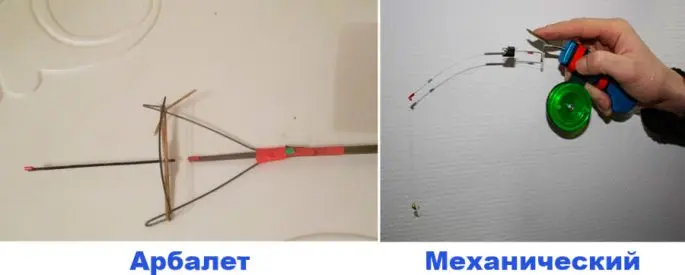
- Crossbow. This variety has a certain similarity with a similar type of weapon that was used in ancient times. Similar designs of nods are quite widespread in winter fishing. Not bad results can be obtained when catching bream, roach, crucian carp, bream, etc. It is considered a nod with a low degree of rigidity, and is used in water bodies where there is no current.
- Mechanical types of nods are universal devices designed for fishing at great depths and with the presence of a fast current. You can pick up a variety of artificial baits for them. They are not particularly sensitive, but under certain conditions there is nothing to replace them. It is recommended for use by beginners who have just started to master winter types of fishing.
Instructions for making nods with your own hands
Shcherbakov’s arrow (bearing) nod
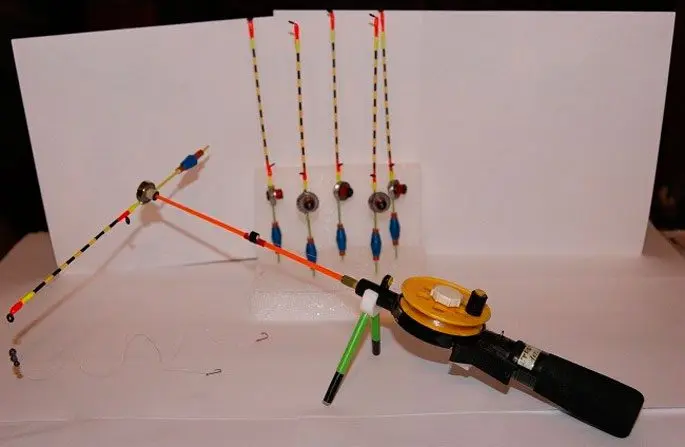
Many winter fishing enthusiasts are engaged in the independent manufacture of fishing accessories and gear. Moreover, for some fishing enthusiasts, this is considered a kind of hobby, while others do this not from a good life. The nod for a winter fishing rod is no exception. In most cases, a homemade nod is much more functional than a purchased one.
First of all, you should pay attention to the lateral, very sensitive, nod of Shcherbakov. With it, you can catch such cautious fish as carp.
Shcherbakov’s nod includes:
- A small bearing that is worn on the tip of the rod. Such a device is the main element of the future nod.
- A metal spoke is securely attached to the base of the bearing. As a rule, fastening is carried out using soldering.
- There should be a weight on both sides of the spoke for good balance. The load is selected depending on the nature of the bait used. Here, at one end of the needle, there should be a loop.
- The main fishing line is threaded through the eyelet: the nod is ready for use.
Shcherbakov’s nod without soldering the bearing. Do-it-yourself ready-made shcherbakovka.
Homemade nod made from thin plastic
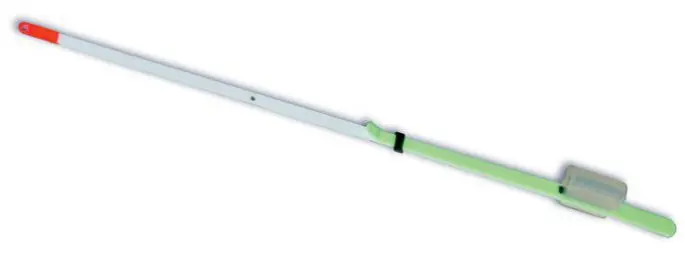
For the manufacture of a sensitive nod, plastic from well-known disposable cups will do. Although, it is possible to use plastic, for example, from bottles where various drinks are stored, etc.
How to make such a nod:
- First you need to cut the cups into strips with a size of 10 cm x 0,8 mm. As a rule, the sides of disposable cups are used.
- The end of any of the strips is bent so that an arc is obtained.
- Having measured 3-5 mm from the top of the strip, a hole is made in it using a heated needle or awl. This part of the strip, where the hole is located, should be covered with red waterproof varnish.
- On the opposite side of the strip, a cambric is put on, 6-8 mm in size.
As a result of similar actions, a nod pattern will be obtained, which is preferable to use on non-rewinders.
Super nod (gatehouse) with your own hands in 5 minutes.
A nod from a clock spring
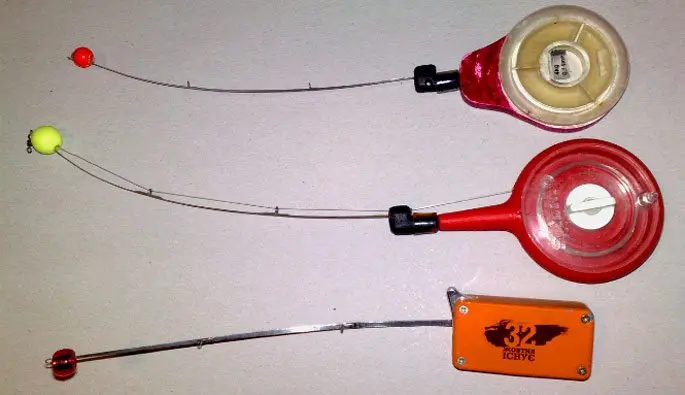
Another simple way to make an effective nod is from an available material, such as a clock spring, especially since such watches have not been used for a long time and lie dead weight somewhere.
It is made as follows:
- The existing spring should be straightened, although this is not easy to do, but you need to try. After that, a part of the spring, about 15 cm long, should be cut off from the spring.
- On the one hand, the spring is narrowed with tools up to 2 mm. Nowadays, this can be done with the help of a grinder, and quite quickly.
- After that, the narrowed part is treated with sandpaper so that no burrs remain.
- Taking the wire, they make a small loop, the diameter of which should not be more than the width of the narrow part of the spring, since this part will serve as a nod of the winter fishing rod.
- After the loop is made, it is soldered to the end of the nod, using acid, a soldering iron and solder.
- The soldering area should be treated with fine sandpaper.
The result of the work done will be a device for catching fish such as perch or roach, using jig. Such a nod has an average degree of rigidity and is more versatile.
A nod from a clock spring. Manufacturing
Twisted spring nods
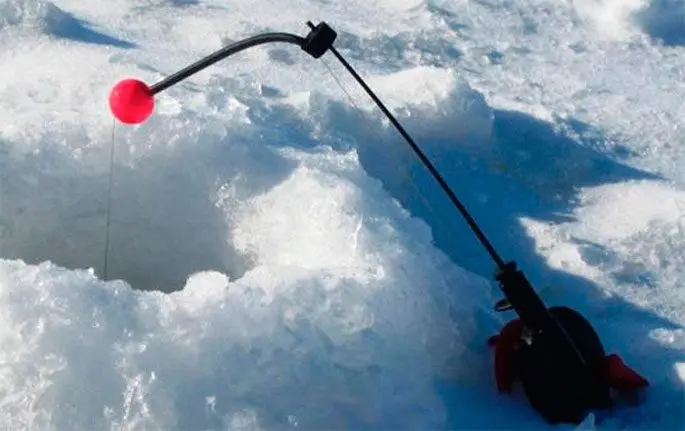
When fishing on a balancer, a harder nod will do. You can make it like this:
- The manufacturing process at the initial stage is not accompanied by any differences from the manufacture of a nod from a clock spring. From a twisted spring, with the help of scissors for metal, a segment of the required length is cut off, and a loop is also made of wire. The edges of the workpiece are carefully cleaned with sandpaper.
- The process of soldering the loop to the end of the workpiece has its own characteristics. It should be soldered so that a small ball forms at the soldering point.
- After that, the part is again cultivated with fine sandpaper. In conclusion, the surface of the nod is covered with a waterproof varnish in bright colors.
- A cambric is taken and two segments are cut off from it, 10 mm long and put on a nod.
When making such a nod, it is very important to correctly calculate the stiffness of the spring (nod) in accordance with the weight of the bait. In order to fine-tune the product, take and increase or decrease the length of the working part.
A nod to the side bait.
Alternative nods
There are a lot of options for making nods. Here is another way to make a nod. The technology is as follows:
- A piece of aluminum wire of a certain length is taken.
- Pliers are picked up and one of the ends of the wire is bent so that the end of the fishing line can be clamped here.
- A fishing line with a diameter of 1 mm or more is taken, clamped at the end of the wire, after which it is wound around the wire in the form of a spiral. The length of the spiral should be 10-15 cm.
- The second end of the fishing line is securely clamped by the second end of the wire.
- Take a small container of water and bring to a boil. After that, a blank with a spiral wound fishing line is placed in the water for 10-15 minutes.
- After that, the workpiece is pulled out of boiling water and placed in a container of cold water for rapid cooling.
- Both ends of the fishing line must be released and the spiral from the fishing line removed from the wire. The nod is ready for further use.
How to choose the right nod
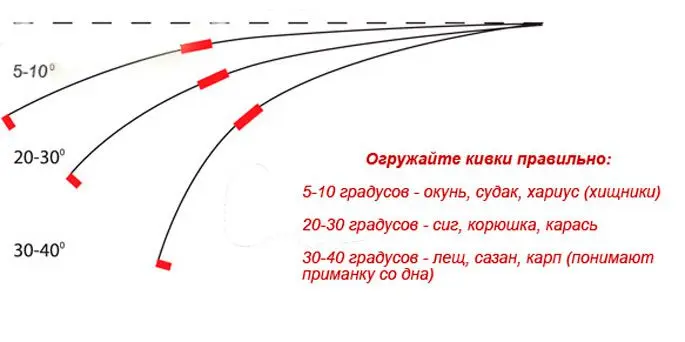
The effectiveness of winter fishing largely depends on the design of the nod and its capabilities, and for this you need to choose the right one. When choosing, you should pay attention to its weight, dimensions and ability to control the bait. Therefore, nods are different and are intended for different gear. For example:
- Nods for non-rewinders. Very sensitive and very soft tackle is used here, allowing you to catch small perch and roach.
- Nods for mormyshki. These are, as a rule, rather rigid gear in their characteristics.
- Nods for winter, sheer glitter. In such conditions, strong tackle with short nods is used. As a rule, a short nod does not affect the behavior of the bait and serves only as an indicator of bites. This type of device is suitable for catching large fish.
- Balancing nods are designed for catching a large predator, where artificial spinners are used as nozzles.
In conclusion, it should be noted that the nod is a very useful piece of gear for winter fishing. Depending on what type of fish is being hunted, a nod may have certain characteristics. Moreover, the design of the nod may depend on the imagination of the angler himself, who always knows what kind of nod he needs and with what data. Naturally, it is unlikely that it will be possible to purchase this element with the necessary indicators at a retail outlet or on the market. Therefore, most experienced anglers are engaged in independent production of nods for their gear, constantly experimenting with different materials for their manufacture.
Making a nod for a winter fishing rod
The tackle element is very simple, which indicates the availability in its manufacture. Even without special knowledge and skills, it is not at all difficult to make a nod yourself, at home.









